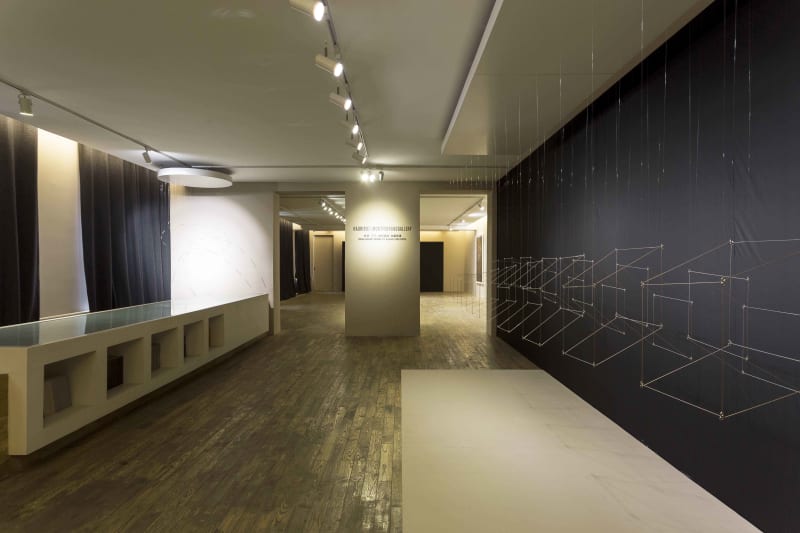Ding Yi (b.1962), the leader of China’s new abstraction in the 1980s, led the way by creating two repetitive patterns “+” and “x”. Separated from any representation of political or historical meaning, they are considered a symbol of a new freedom. Ding Yi is thus detached from the figurative and expressionist movements of some of his contemporaries. His crosses form a dense and complex network developed for almost 30 years in different colour compositions, alternatively using pigments, pens, markers, acrylic, pastels, on various media ranging from canvas to paper through cardboard and tapestry. For the artist this repetitive and obsessive use of the same motifs is a way to go beyond the brush strokes of ancient Chinese art, beyond tradition and furthermore to reflect on early modern European Art. Ding Yi makes this method a philosophy. The formal constraint eventually allows him to emancipate from the sociocultural references of many of his peers.
Ding Yi lives and works in Shanghai. Internationally recognized, he participated in the Venice Biennale (1993), the Yokohama Triennial (2001) and the Guang- zhou Biennale (2002). In 2008, the Museum of Modern Art of Bologna in Italy devoted a major solo exhibition to him. His works are included in numerous collections, among which Centre Pompidou in Paris; Daimler Art Collection in Berlin; DSL Collection in Paris; Leeum, Samsung Museum of Art in Seoul; Long Museum in Shanghai; M + in Hong Kong; Uli Sigg Collection in Switzerland; Yuz Museum in Shanghai.
Born in Caracas of Venezuela in 1965, Elias Crespin first studied computer engineering and integrated both science and art into his artistic practice. He thus produces moving sculptures made of suspended metal mesh or rods that float in space, leading a dance of subtle colour and movements animated by small engines and a sophisticated technological device.
Crespin also plays with materials - steel, plexiglass and nylon - transparency and shadows. An heir to the South American kinetic art movement he developed a very personal line with his poetic mechanism of geometry. Crespin has captured the attention of some important institutions since he was included in the exhibitions Dynamo at the Grand Palais (2013), Turbulence at the Cultural Space of Louis Vuitton (2012), the Busan Biennale (2014) or in the Boghossian foundation. Galerie Denise René, the major gallery for abstract artists in the 20th century, supports his work since its inception. His works are included in some important collections including the Museum of Fine Arts in Houston, the Museo del Barrio in New York and the MALBA in Buenos Aires.
In this exhibition we can find an exchange about the line and simple geometric shapes with special attention paid to the structure and movement fixed on paper or in action in space. Ding Yi's repetitive patterns of cross coexist naturally with Crespin’s aerial stems and wires, which is a real delight to the visitors grabbed by a playful, meditative and soothing mood.
With special thanks to ShanghART.
